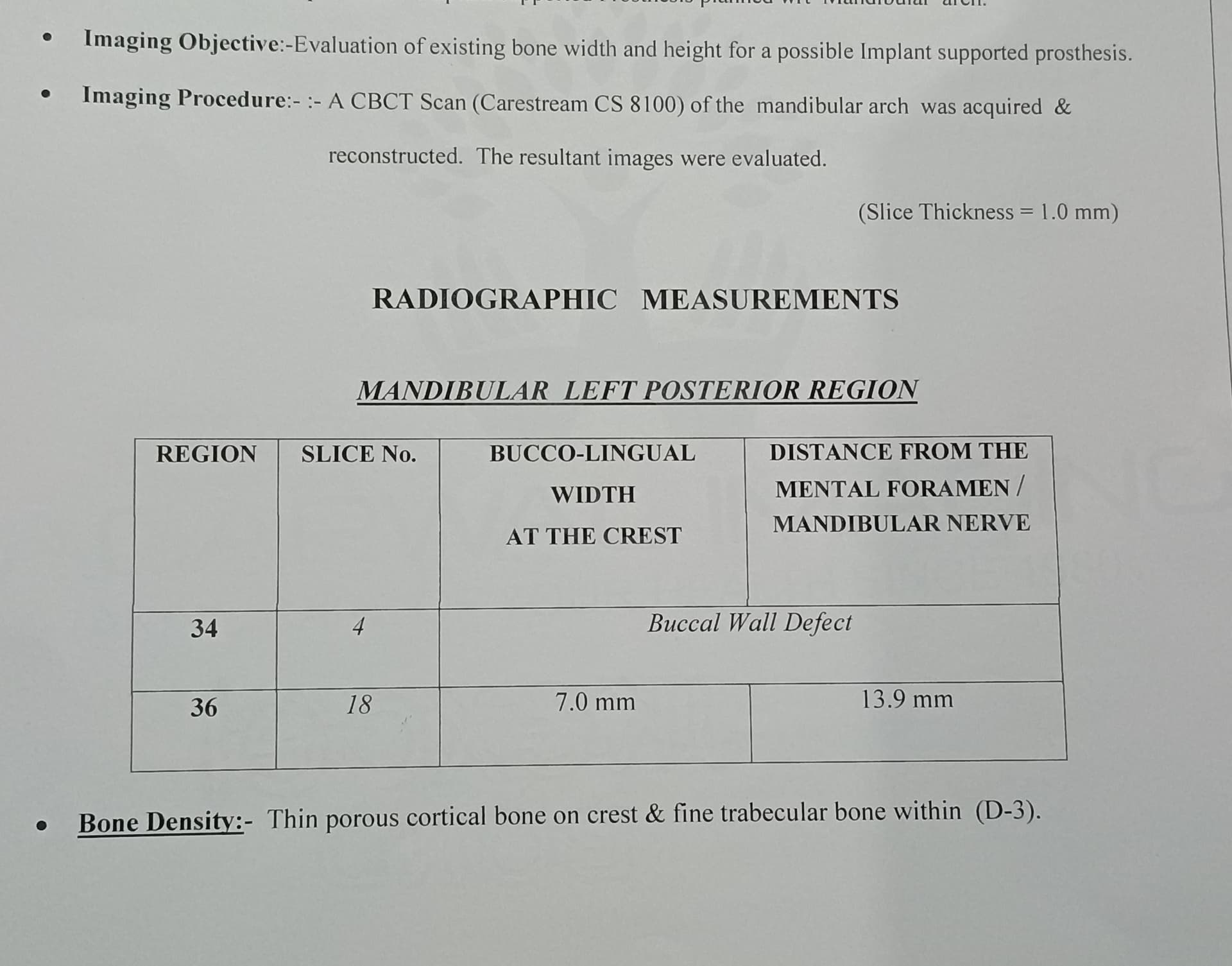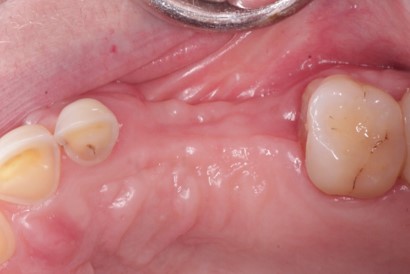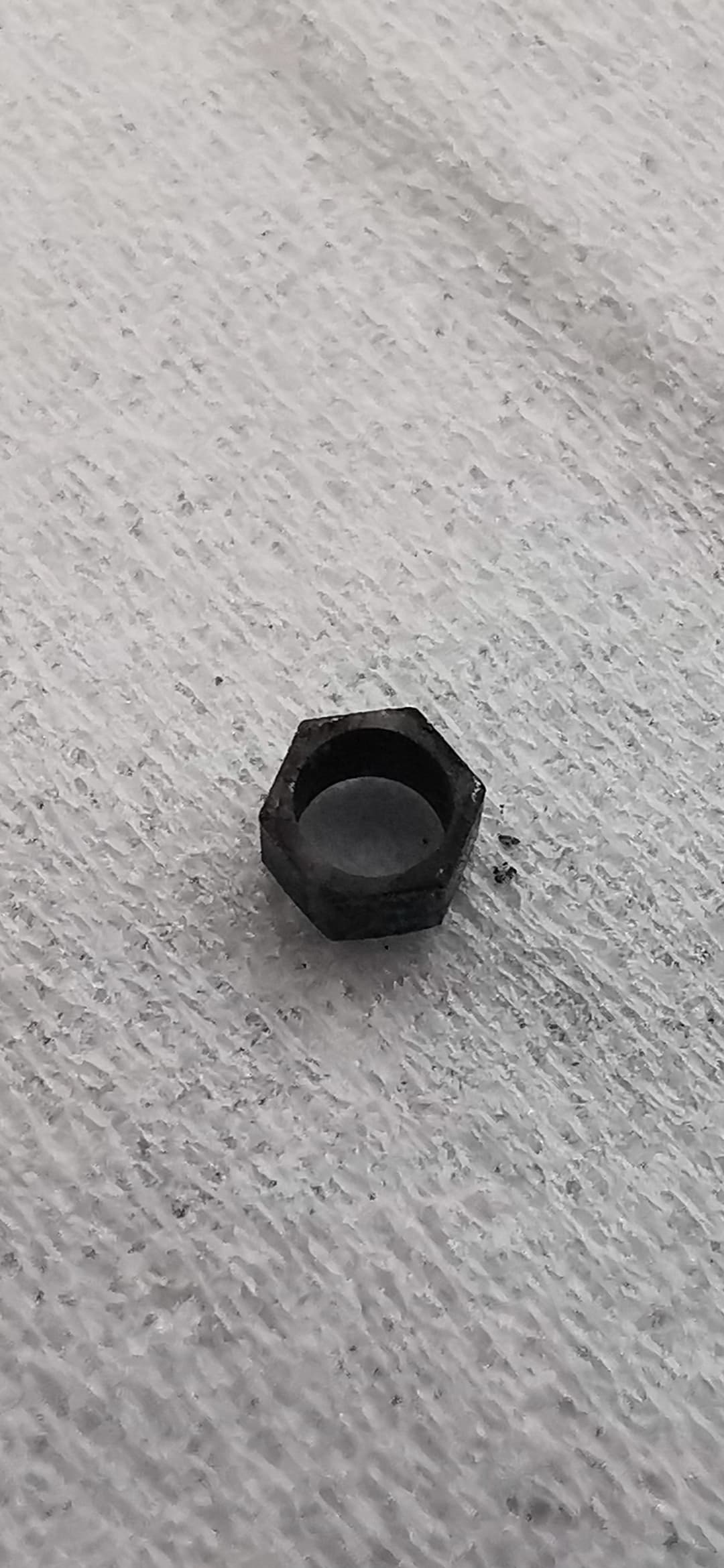Is this implant integrating or is there a complication?
I placed an immediate implant in 12. It is an Ankylos Implant 3.5 x 11mm. I got good primary stability. Buccal bone was thin at the crest and I placed some bone chips collected from the osteotomy drills. Flap was closed and submerged healing was given. Patient continues to wear her partial denture. I took a radiograph after 3 months and I can see bone loss along the mesial surface of implant. I left it to integrate further and will be seeing her for impressions next week which will be 4.5 months from when I placed implant. Do you think this implant is integrating or should I expect complication around it?



32 Comments on Is this implant integrating or is there a complication?
New comments are currently closed for this post.
Tomek
10/8/2017
I think this implant is failing. I can see bone loss around platform and apical part also compared to rtg after surgery. I would explant it, graft and redo after 6 months. Wait for comments of more experienced people here. What could be the source of infection here??
Dr. H. Comlekci
10/9/2017
In the second radiograph things look pretty good, when did you expose the implant , it seems like something happened after the exposure appointment. I'm assuming this was an immediate placement.
Paul
10/9/2017
After four and a half months the implant should be integrated. The before and after radiograph are obviously suggestive of a potential problem. There is nothing to loose but subject the implant to a test by reverse torque and see if it spins. Otherwise you would have to have the instrument that costs 5000 dollars to test stability and I wonder how accurate the results would be. A scan may or may not reveal the true state of affairs.
John Wick
11/12/2017
That instrument you mentioned is an ISQ meter, or implant stability quotient. It will objectively tell you if the implant is failing. My guess is, you placed the implant to close to buccal wall. If you do not have at least 2mm of buccal bone, you will see areas like this start to show up on radiographs. It could be many things that cause the implant to fail.
Phil Mendelovitz
10/9/2017
I expect it to fail.
Was this done guided?
Many times there is a facial concavity that gets thin in cross section near the apex.
In retrospect its always great to have 2mm of bone all around the implant which is difficult.
GB Oral Surgeon
10/9/2017
A good case to show initial assessment is important .
It looks like there is a peri apical pathology with some opacity although not well defined . It's always good in the hind sight but this needs a CBCT at the least .
I wouldn't do anything before a CBCT .
As others have suggested it may be useful to explant.
I am also not sure why patient had no symptoms ?
Checking the medical history again may help .
Devin
10/9/2017
Necrotic tooth next door. It's draining through your implant.
Jerome smith, dds.
10/11/2017
No way ! Adjacent teeth are virgin teeth!
Raul R Mena
10/9/2017
This implant is not failing.
It already FAILED
Remove curettage the area place Doxycycline in the extraction site and leave it there for about 5 to 10 minutes, rinse and curettage, and graft the socket the same day of the implant removal.
Christo Botha
10/9/2017
Most of us have been there. At surgery all seems straight forward. But then...
This fixture is failing (or more diplomatically to the patient:'your body has failed to integrate wirh our fixture'. Ha!
Upfront, frankand honest best way forward. And no more good money after bad Don't chance it by going to restoration fabrication. Why? Just looking at info at hand, all opinions are pure speculation in my view. Keep up the good work!
Merlin P Ohmer, DDS, MAGD
10/9/2017
My best opinion is it has failed. There are three choices: integrated, Ailing and failing. I would take a CBCT and do vitality testing of the adjacent teeth.
Good luck.
Dr Emil Svoboda
10/9/2017
The implant has failed. Remove, graft and retreat. Yes, test the adjcent tooth for endo problems. Emil
Hector Norero
10/9/2017
I agree with the comments...the implant is failed..you must explant it do a regenerative technique and re-enter at 6 months.
This Ankylos implant is so sensible at the time of preparing the bed in bone.
The torque of insertion will not be more than 50 newtons
Wesley Haddix
10/9/2017
Don’t beat yourself up. It happens to everyone. Review your technique; recheck patient’t health hx for risk factors before removing and grafting to make sure the graft has maximum probability of success. Place another after the new graft has healed. All the best.
Dr
10/9/2017
I think it is failed,
treatment -remove, antibiotics, wait till 4 month, radiograph than decide to place an Implant .
Houshmand
10/10/2017
Unfortunatly, in this case You should expect complications. I would suggest to have a three dimensional Imaging for such a cases. So you can decide, if a postprocedural augmentation and waiting is more reasonable, Then removing the implant.
g. H.
uli friess
10/10/2017
Most probably the implant is failed, but you only will known for shure, when it will be exposed. Good luck
lbl
10/10/2017
no one has said a thing about the partial denture. if I understand correctly the partial could be causing torque on the implant if she is wearing it? relieve the partial denture when doing this? an osstell or similar radiofrequency type device gives good readings on primary insertion stability. a flap procedure really gives the practitioner a nice view for implant placement in certain cases! dentistry can be hard as we all know. keep trying
Kadgil
10/11/2017
Is there possibly some circular radiographic outline in the bone directly above the apex? I can see it on the first and third image, it almost has the outline of a raducilar cyst without the central radio lucency, perhaps there a pre-existing cyst like superficial lesion camouflaged by thick bone and the implant has penetrated this area?
Dr Aziz Amro
10/11/2017
Dear
What is the best cement for implant
Safe and easy to remove ?
Oleg Amayev
10/12/2017
I use pemier. I am happy with it.
Oleg Amayev
10/12/2017
Very possible the bone is too narrow for the implant inserted and that's why you developed bone loss.
Just remove this implant and place new one 3-4month later. Things happen, don't worry. Good Luck
Niels
10/13/2017
that will be one large lateral incisor.
Bülent Zeytinoğlu
10/16/2017
I think this implant is installed in a socket which has an chronic apical residuel periodontitis that is stimulated by the implant operation and in turn prevented osseointegration.This result shows us the importance of detailed x ray examination of the bone.I think the implant has to be explanted bone treated and then re entry can be tried good luck.
S Alexander
10/16/2017
This implant has failed. In my opinion the buccolingual width was too narrow for the fixture. It is a common location to have a narrow ridge. I agree with others, remove and graft and come back in later and place another. You might want to augment the buccal as well. One last thing. Read some of the Univ of Washington studies about cement. I'm not up to date on them, but if I'm not mistaken, most cements have limited implant research behind them. Premier, if unchanged in last 4-5 years, could be one that is most destructive to bone.
Wesley Haddix
10/17/2017
This remark is only a reference to personal experience and in no way is to be taken as a criticism.
CBCT is an immensely valuable tool, chiefly in diagnosis a planning. I had my doubts as well until I integrated one into my practice and realized it elevated me to entirely standard of care. I suddenly was able to see conditions that I could only guess at, and in some cases have absolutely zero knowledge of existing using even the best quality 2D digital films and radiographic techniques. Most importantly, I was able to visualize a surgical area in 3 dimensions before ever touching the patient. Diagnosis, and thus treatment planning were raised to an entirely new level. While many are still resisting CBCT, others, including myself, are actually 3D printing surgical sites for operative visualization, and printing our own surgical guides.
Regarding guides: a guide may or may not have changed the outcome of the doctor’s case. Possibly , the CBCT and the information gleaned may (emphasis) have shown some condition that could have been taken into consideration. Possibly. A CBCT would likely answer any questions about the status of the implant and surrounding structures, thus giving a surgeon clearer picture (no pun) of what will be under the tissue.
A last word about guides, as a surgeon that began placing implant without them. In a case such as this, with wide clearance of adjacent vital structures and assuming Division A bone, I’d loke to think a surgeon with knowledge of the final prosthetic outcome (read:GP) should be able to develop skills to place such an implant without a guide. I was recently asked to do such a placement by a dentist who had never placed an implant freehand, which surprised me. I also have seen outcomes where guides were not accurate to a significant degree; a surgeon has to be able to recognize that fact as well. Again, not a commentary on this doctor’s case, only offering opinions based on personal experience. Take them, as Carl Misch said, “As food, using what uou need, getting rid of the rest.â€
I believe Bruce Lee offered similar sentiments on a different matter.
Blessings and best if outcomes to our ptients and practices.
Tamas Boros
10/17/2017
The first picture shows only a small over drilling, this is not pathological. Happens to everyone sometimes. The picture with the visible bone loss at the middle section is a mark of pathologic process. Remove, redo as written above.
prakash191281
10/18/2017
Thank you everyone for your comments. I have taken a recent radiograph which is 4.5 months after implant placement. Crestal bone level looks good and the radiolucency is smaller in size compared to previous radiograph. I raised a small flap and implant seems to have integrated. Cover screw was removed and open tray impression was taken. Patient has been informed this implant may be failing. Is it advisable to continue with restoration?
I understand getting a CBCT is ideal at this stage but patient is not keen to get a CBCT. Kindly suggest.
Recent radiograph attached
prakash191281
10/18/2017
New radiograph attached
Merlin P. Ohmer, DDS, MAG
10/18/2017
Explant. Currette. Come back another day.
jaylee.implant
10/24/2017
For some reason, it's failing now.
Fixture removal and then GBR recommended.
Dr. Gerald Rudick
11/28/2017
As always, a lot of good comments were made about this situation, however, I like the observation of Bulent Zeytinoglu who commented on the possibility of some apical pathology that was left behind from the failed natural lateral incisor, that was stirred up with the preparation and installation of the implant.
Even if a CBCT scan would have picked up a void in the labial plate, if the site was healthy, a slight fenestration would probably not have caused the pathology that we see that is resulting in a failed implant procedure........ need to remove, curette the site......... and wait at least 6 weeks before grafting....and after 4-6 months, take a new xray and see if the radiolucency has completely disappeared......and if so, prepare a fresh osteotomy and place a new implant.


















